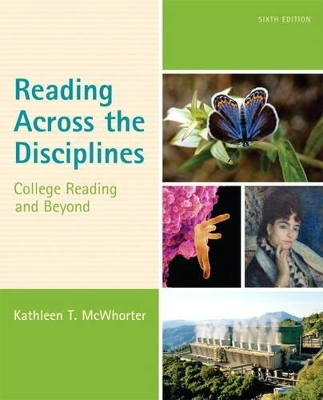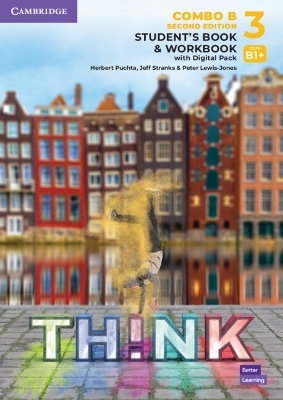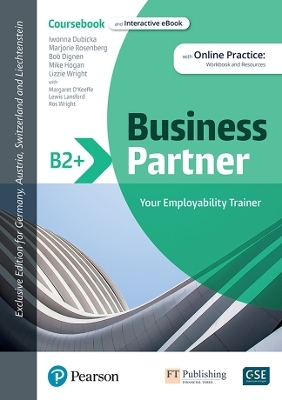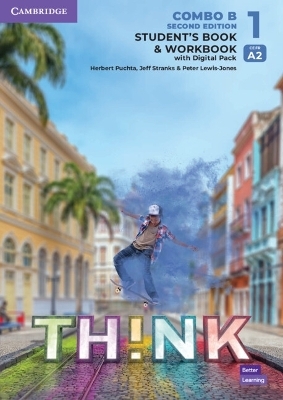
Reading Across the Disciplines
Longman Inc
978-0-321-99355-7 (ISBN)
- Titel ist leider vergriffen;
keine Neuauflage - Artikel merken
Reading Across the Disciplines is organized into three parts for flexibility and ease-of-use. Part One presents a brief skill introduction (in handbook format) introducing students to essential vocabulary, comprehension, critical reading, and reading rate skills. Part Two has twelve chapters, each containing three readings representative of a different academic discipline.
0321993551 / 9780321993557 Reading Across the Disciplines: College Reading and Beyond Plus NEW MyReadingLab with eText -- Access Card Package
Package consists of: 0205869165 / 9780205869169 NEW MyReadingLab with Pearson eText -- Valuepack Access Card
0321921488 / 9780321921482 Reading Across the Disciplines: College Reading and Beyond
Preface
Ten Success Strategies for Learning and Studying Academic Disciplines
Strategy 1 Understand the Importance of Reading in Each Academic Discipline
Strategy 2 Manage Your Time and Balance Your Life
Strategy 3 Develop New Skills for Each Academic Discipline
Strategy 4 Learn the Language of the Discipline
Strategy 5 Communicate, Network, and Collaborate
Strategy 6 Demonstrate Academic Integrity
Strategy 7 Make the Most of Online Courses and Assignments
Strategy 8 Develop and Use Electronic Study and Information Resources
Strategy 9 Focus Your Research
Strategy 10 Learn to Take Tests
Part One
A Handbook for Reading and Thinking in College
1 Active Reading and Thinking Strategies
1a Active Reading: The Key to Academic Success
1b Previewing
Reading: Body Gestures, Joseph A. DeVito
Reading: Treating Wounded Soldiers: Polytrauma, Joan O’C. Hamilton
1c Activating Background Knowledge
1d Writing to Strengthen Your Reading and Recall
1e Checking Your Comprehension
1f Strengthening Your Comprehension
2 Vocabulary Building
2a Using Context Clues
2b Learning Prefixes, Roots, and Suffixes
2c Learning Unusual Words and Idioms
3 Thesis, Main Ideas, Supporting Details, and Transitions
3a Identifying the Thesis
3b Finding Stated Main Ideas
3c Recognizing Supporting Details
3d Understanding Implied Main Ideas
3e Recognizing Transitions
4 Organizational Patterns
4a Definition
4b Classification
4c Order or Sequence
4d Cause and Effect
4e Comparison and Contrast
4f Listing/Enumeration
4g Mixed Patterns
4h Other Patterns of Organization
5 Textbook Learning Strategies
5a Strategies for Reading Textbooks
5b Use the SQ3R System for Learning from Textbooks
5c Use Learning and Recall Strategies
5d Highlighting
Reading: What Is Crime? John D. Carl
5e Annotating
5f Paraphrasing
5g Outlining to Organize Ideas
5h Mapping to Show Relationships
5i Summarizing to Condense Ideas
6 Making Inferences
6a Making Inferences from the Given Facts
6b Making Inferences from Written Material
6c How to Make Accurate Inferences
7 Critical Reading
7a Is the Material Fact or Opinion?
7b What Is the Author’s Purpose?
7c What Is the Tone?
7d Is the Author Biased?
7e How Strong Are the Data and Evidence?
7f How Is Connotative Language Used?
7g How Is Figurative Language Used?
7h How Reliable Are Printed and Electronic Source Materials?
8 Reading and Thinking Visually
8a Reading and Analyzing Photographs
8b A General Approach to Reading Graphics
8c Tables
8d Graphs
8e Charts
8f Diagrams
8g Maps and Time Lines
8h Infographics: Combined Photos, Charts, and Diagrams
8i Cartoons
Part Two
Readings for Academic Disciplines
Introduction: Reading Across the Disciplines
9 Social Sciences
Tips for Reading in the Social Sciences
SELECTION 1 A Surveillance Society, William E. Thompson and Joseph V. Hickey
SELECTION 2 Childfree by Choice, Kelly J. Welch
SELECTION 3 Are Sports Fans Happier? Sid Kirchheimer
10 Communication/Speech
Tips for Reading in Communication/Speech
SELECTION 4 Talking to Koko the Gorilla, Alex Hannaford
SELECTION 5 Movie and TV Genres, John Vivian
Selection 6 Relationships and Technology, Joseph A. DeVito
11 Arts/Humanities/Literature
Tips for Reading in the Arts/Humanities/Literature
SELECTION 7 Censorship of Offensive Art, Paul Zelanski and Mary Pat Fisher
SELECTION 8 Little Brother™, Bruce Holland Rogers [Short Story]
SELECTION 9 The Road Not Taken, Robert Frost [Poem]
12 Political Science/Government/History
Tips for Reading in Political Science/Government/History
SELECTION 10 When Theodore Roosevelt Saved Football, Bruce Watson
SELECTION 11 Camping for Their Lives, Scott Bransford
SELECTION 12 Reporting the News, George C. Edwards III, Martin P. Wattenberg, and Robert L. Lineberry
13 Business/Advertising/Economics
Tips for Reading in Business/Advertising/Economics
Selection 13 The Super Bowl: The Mother Of All Advertising Events—But Is It Worth It? Philip Kotler and Gary Armstrong
SELECTION 14 Mapping, and Sharing, the Consumer Genome, Natasha Singer
SELECTION 15 Product Placement and Advergaming, Michael Solomon
14 Technology in Academic Disciplines
Tips for Reading about Technology
SELECTION 16 DNA Fingerprinting: Cracking Our Genetic “Barcode,” Elaine N. Marieb
SELECTION 17 Interface Facts, Katie L. Burke
SELECTION 18 The Robot Invasion, Charlie Gillis
15 Health-Related Fields
Tips for Reading in Health-Related Fields
SELECTION 19 Medical Technology and Ethical Issues, William E. Thompson and Joseph V. Hickey
SELECTION 20 When Living Is a Fate Worse Than Death, Christine Mitchell
Selection 21 A Step Beyond Human, Andy Greenberg
16 Life Sciences
Tips for Reading in Life Sciences
SELECTION 22Can Technology Help Us Put an End to Animal Experimentation? George Dvorsky
SELECTION 23 Species Extinction: One Found, Many Lost, Teresa Audesirk, Gerald Audesirk, and Bruce E. Byers
SELECTION 24 And Incredibly Bright,Holly Haworth
17 Physical Sciences/Mathematics
Tips for Reading in Physical Sciences/Mathematics
Tips for Reading Word Problems
SELECTION 25 A Statistician’s View: What Are Your Chances of Winning the Powerball Lottery? Ronald L. Wasserstein
SELECTION 26 “Hope It’s in Your Backyard!” Neil deMause
SELECTION 27 Additional Renewable-Energy Options, Richard T. Wright and Dorothy F. Boorse
18 Career Fields
Tips for Reading in Career Fields
SELECTION 28 Lift the Cell Phone Ban, David Rapp
SELECTION 29 Trial Lawyers Cater to Jurors’ Demands for Visual Evidence, Sylvia Hsieh
SELECTION 30 Eco-tourism, John R. Walker and Josielyn T. Walker
PART THREE
Classroom Simulation: Textbook Reading and Writing
Preparing for the Lecture
Reading the Assignment
Reviewing the Reading Assignment
Attending the Lecture and Participating in Class
Writing about the Reading
Taking Quizzes
Taking the Exam
| Erscheint lt. Verlag | 3.4.2014 |
|---|---|
| Verlagsort | New Jersey |
| Sprache | englisch |
| Gewicht | 930 g |
| Themenwelt | Schulbuch / Wörterbuch ► Erwachsenenbildung |
| Schulbuch / Wörterbuch ► Wörterbuch / Fremdsprachen | |
| Geisteswissenschaften ► Sprach- / Literaturwissenschaft ► Sprachwissenschaft | |
| Sozialwissenschaften ► Pädagogik | |
| ISBN-10 | 0-321-99355-1 / 0321993551 |
| ISBN-13 | 978-0-321-99355-7 / 9780321993557 |
| Zustand | Neuware |
| Haben Sie eine Frage zum Produkt? |
aus dem Bereich


